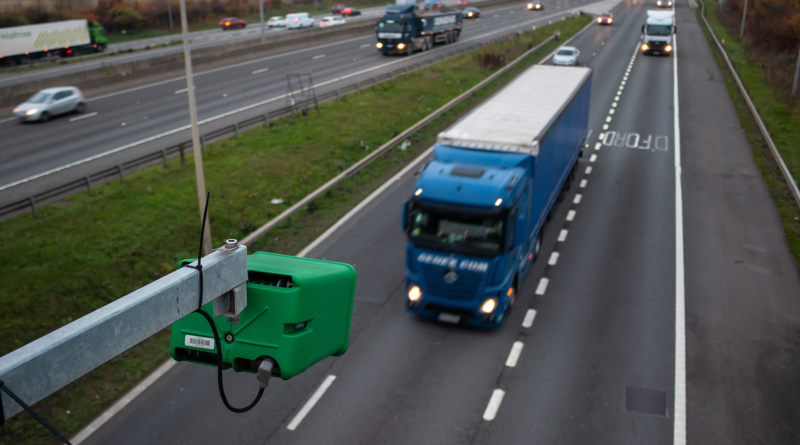Leveraging AI for Real-Time Triple Riding Violation Detection in Urban Traffic Systems
Introduction
In recent years, urban traffic systems have become increasingly complex due to the growing population, rapid urbanization, and a surge in motorized vehicles. This has created numerous challenges for traffic authorities, including ensuring the safety of pedestrians, cyclists, and motorcyclists. Among the various traffic violations, triple riding – where three people ride on a motorcycle designed for two – has emerged as a significant issue. It not only compromises the safety of the riders but also contributes to road accidents, congestion, and inefficient traffic flow. Leveraging artificial intelligence (AI) for triple riding violation detection in urban traffic systems presents an innovative solution to address these challenges. This content explores how AI can be integrated into existing traffic monitoring systems to enhance the detection and enforcement of triple riding violations.
The Problem of Triple Riding in Urban Areas
Triple riding is a dangerous practice that often occurs in busy urban environments, especially in regions where motorcycles are a primary mode of transportation due to their affordability and efficiency. Although motorcycles are designed to carry only two riders, triple riding is common in densely populated cities where the demand for space and transportation is high. This practice increases the risk of accidents, as motorcycles are not built to handle the added weight and can become unstable at high speeds or in challenging traffic conditions.
Moreover, the presence of three people on a motorcycle puts the riders at a greater risk of injury in case of a crash, making it a serious safety concern. Traffic authorities struggle to monitor and enforce regulations on triple riding violations manually, as it requires a significant amount of resources, personnel, and time. This is where the integration of AI technologies can offer a transformative solution by automating the process and improving the accuracy and speed of violation detection.
The Role of AI in Traffic Violation Detection
Artificial intelligence has already demonstrated its potential in a wide range of industries, from healthcare to finance, and now it is being applied to traffic management systems to improve road safety. AI-powered traffic systems can analyze large volumes of data from various sources, such as cameras, sensors, and GPS data, to detect violations in real time. By combining computer vision, machine learning algorithms, and big data analytics, AI can efficiently identify traffic violations, including triple riding, without human intervention.
In the context of triple riding violation detection, AI can utilize several techniques to identify when a motorcycle is carrying more than two riders. Machine learning models can be trained on large datasets of traffic images and videos to recognize the specific features associated with triple riding, such as the number of individuals on a motorcycle and their seating positions. Once the AI system identifies a violation, it can trigger an alert to law enforcement or automatically issue a fine to the violators.
How AI Detects Triple Riding Violations in Real Time
AI systems used for triple riding violation detection rely on several key components to work effectively. These components include:
Computer Vision:
Computer vision algorithms enable the AI system to “see” and understand visual data from cameras installed along roadways, at intersections, or in traffic monitoring centers. These cameras capture images and videos of vehicles in motion, which are then processed by AI models trained to detect specific patterns related to traffic violations. For triple riding detection, the AI system can identify the silhouette of the motorcycle and the riders, counting the number of individuals seated on it.
Object Detection and Tracking:
Object detection models use deep learning techniques to identify and track individual objects within a given frame. In the case of triple riding violation detection, the AI system can distinguish between a motorcycle and pedestrians or other vehicles. It then tracks the motorcycle’s movement and monitors whether the number of people riding on it exceeds the legal limit.
Pattern Recognition:
AI models can be trained to recognize specific patterns that suggest a violation. For example, if the system identifies a motorcycle with more than two riders, it can flag the event as a triple riding violation. The AI model can also analyze the posture and positioning of the riders to ensure accuracy in detection. If the riders are seated in positions that indicate a third person is involved (such as sitting on the gas tank or standing on the footrests), the system can confirm the violation.
Real-Time Data Processing:
The real-time processing capability of AI allows the system to detect and respond to violations instantly. This is essential in urban traffic systems, where the flow of vehicles is dynamic, and quick decision-making is crucial. As soon as a violation is detected, the AI system can alert traffic enforcement authorities or trigger automated penalties, such as sending notifications to the violators or recording the violation for later review.
Integration with Traffic Management Systems:
For a seamless experience, AI-based triple riding violation detection systems can be integrated with existing traffic management infrastructure. Data from AI cameras can be fed directly into the traffic control center, where traffic operators can review and act upon the information. In some systems, AI can automatically adjust traffic signals to prioritize enforcement or help law enforcement officers target violators based on real-time information.
Advantages of Using AI for Triple Riding Violation Detection
- Increased Efficiency: Traditional methods of detecting triple riding violations require human intervention, such as manual inspections by traffic officers or patrols. These methods are time-consuming and prone to human error. By automating the process, AI systems can process large amounts of data instantly, enabling real-time detection and enforcement.
- Scalability: AI-powered systems can easily be scaled to cover larger areas or more traffic lanes. Whether it’s a busy city center, an industrial zone, or an urban suburb, AI can monitor traffic across multiple locations simultaneously. This scalability allows for broader coverage without significantly increasing the need for human resources.
- Cost-Effectiveness: While initial setup costs for AI-based monitoring systems can be high, the long-term benefits far outweigh the investment. By reducing the need for human traffic officers and improving the speed of violation detection, AI systems can lower operational costs associated with manual enforcement and paperwork.
- Enhanced Accuracy: AI systems can be trained to recognize patterns with high accuracy, reducing the chances of false positives or missed violations. The precision of AI models in detecting triple riding ensures that only genuine violations are flagged, improving the overall integrity of the enforcement process.
- Improved Road Safety: By automatically detecting and responding to triple riding violations, AI can help prevent dangerous riding practices. The real-time nature of the system allows for immediate corrective actions, such as issuing fines or warnings, which can discourage violators and contribute to safer road conditions for everyone.
Overcoming Challenges in AI-Based Triple Riding Detection
While the potential of AI in detecting triple riding violations is vast, there are still several challenges to overcome:
- Environmental Factors: Weather conditions, poor lighting, or obstructions like heavy traffic can impact the accuracy of AI systems. AI models must be trained to handle these variables effectively, ensuring that the detection process remains accurate even under challenging conditions.
- Privacy Concerns: The use of cameras and AI to monitor traffic raises privacy issues, especially in terms of surveillance. It is crucial for traffic authorities to implement strict data privacy measures, ensuring that the data collected is used solely for enforcement purposes and not for broader surveillance without consent.
- Integration with Legacy Systems: Many cities still use outdated traffic monitoring systems. Integrating AI-powered systems with legacy infrastructure may require significant investments in upgrades or replacements. However, this challenge can be overcome with careful planning and gradual implementation.
Conclusion
Leveraging AI for real-time triple riding violation detection in urban traffic systems presents a promising solution to a long-standing issue. By harnessing the power of AI, traffic authorities can improve the efficiency, accuracy, and scalability of their traffic enforcement efforts. With AI-powered cameras and real-time data processing, triple riding violations can be detected and addressed almost instantaneously, making cities safer for all road users. As AI technologies continue to evolve, we can expect even more advanced solutions that will enhance traffic management, reduce accidents, and promote safer, smarter cities.




